Flight from Colditz: British PoWs' daring glider escape finally takes to sky 67 years late... but the remote-controlled aircraft crashes and its dummy pilot is decapitated)
PUBLISHED: 21:44, 17 March 2012 | UPDATED: 12:06, 18 March 2012
It may have been 67 years late but a replica of the Colditz glider finally took off from the castle yesterday . . . and promptly crashed.
The original glider – nicknamed the Colditz Cock – was part of one of the most audacious escape plans conjured up by British prisoners of war held at the castle.
After discovering a book on aircraft design in the library, the Second World War PoWs designed and constructed it behind a false wall in the attic.
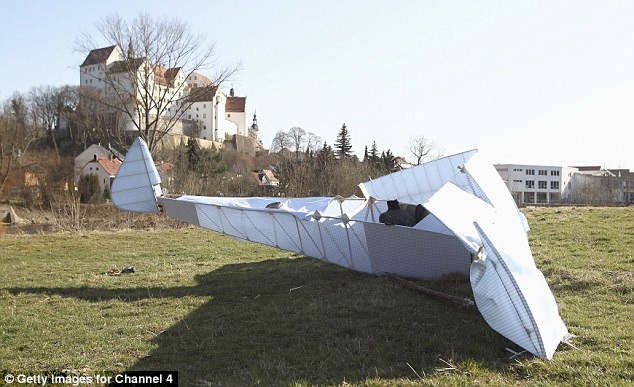
The replica flies off from the Colditz Castle but crashes in the field

The glider crosses the river Mulde in Colditz, Germany
The glider was still under construction when the supposedly escape-proof PoW camp Oflag IV-C was liberated by American forces in April 1945. As a result, its launch, planned for later that spring, never took place.
Yesterday’s flight was for a Channel 4 documentary focusing on the construction of the replica glider and its launch, to be screened in the summer.
The radio-controlled replica, which was piloted by a dummy, had taken off from the roof above the castle chapel. But it crash-landed in a field and the dummy was decapitated, suggesting the two escapees who would have piloted the plane would have died.
Engineer Tony Hoskins, a former pilot, said: ‘We’ve proved that the concept worked. We launched it and it had ample speed as it left the roof. That wasn’t a problem at all.

A replica of the original glider, named the Colditz cock, was one of the escape plans organised by British PoWs
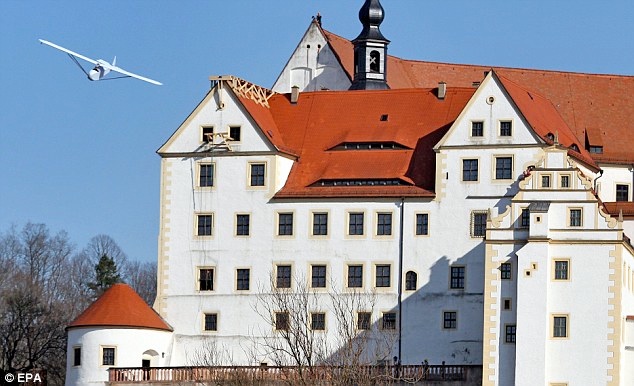
The glider takes to the sky above Colditz Castle in Germary
‘The problem was on arrival. It was a tough call to get it into the field. The rudder was fairly ineffective, so when it went to instigate a right-hand turn it was very slow in coming round.
‘I think the PoWs would have been damn brave to go off the roof like that.
‘But if it wasn’t for the fences or the houses – they weren’t here during the war – there is a chance they would have been able to continue and make a safe arrival.’
Pat Willis, who controlled the military-standard radio transmitter, added: ‘She came off there like a treat. The crash landing was deliberate. I was running out of space so I dumped the glider about 50ft short. There was no way I was going to go through people’s property.’ The original glider was the brainchild of Tony Rolt, a former racing driver awarded a MC for his gallantry during the war, and RAF Flight Lieutenant Bill Goldfinch.
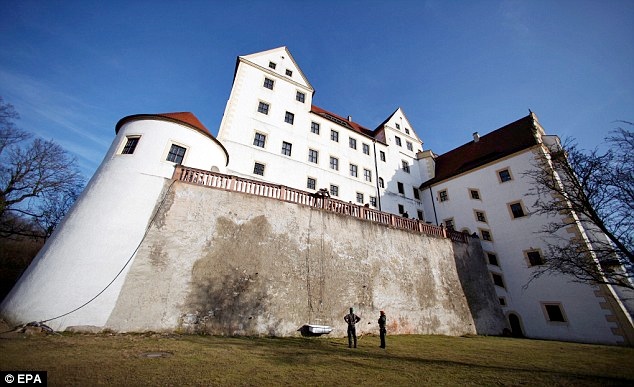
A test is carried out for the possible flight of the Colditz Glider using a bathtub as a weight
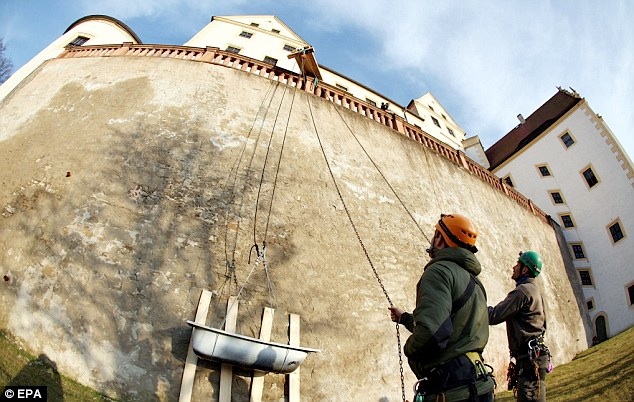
More than 65 years after the end of the Second World War the story about the attempted escape will be shown on TV
They built it in a workshop, just 20ft long by 7ft wide, in the attic, which was patrolled by guards.
It was made from items including sleeping bags, gramophone springs and floor boards. The Channel 4 team constructed their replica on the floor below the attic in the castle.
They spent £3,500 on materials and built their replica to the exact specifications – 33ft 9in wide and 19ft 7in long, although at 23st (150kg) it was half the weight of the original glider to accommodate a dummy rather than two prisoners of war.
Oflag IV-C, immortalised in the BBC television series Colditz, was home to Allied officers with a reputation for foolhardy escapes.
Yet there were still 186 escape attempts, 109 of which were British. Thirty-nine succeeded – 11 British – including a prisoner who impersonated a German general.
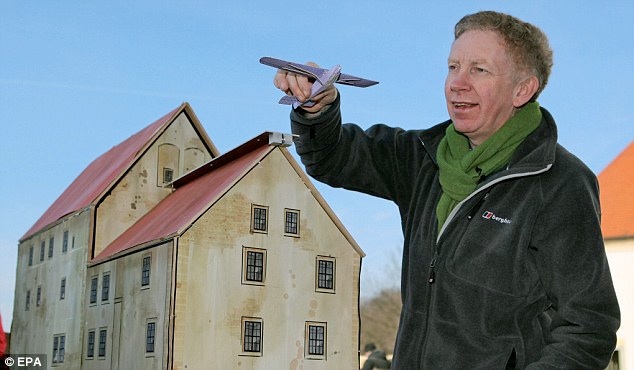
Briton Hugh Hunt - a leading engineer - holds a model of the Colditz Glider in Germany
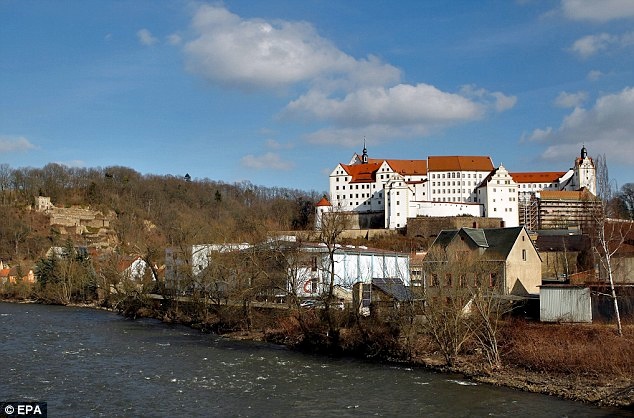
A view of Colditz Castle, above the Mulde River in Germany